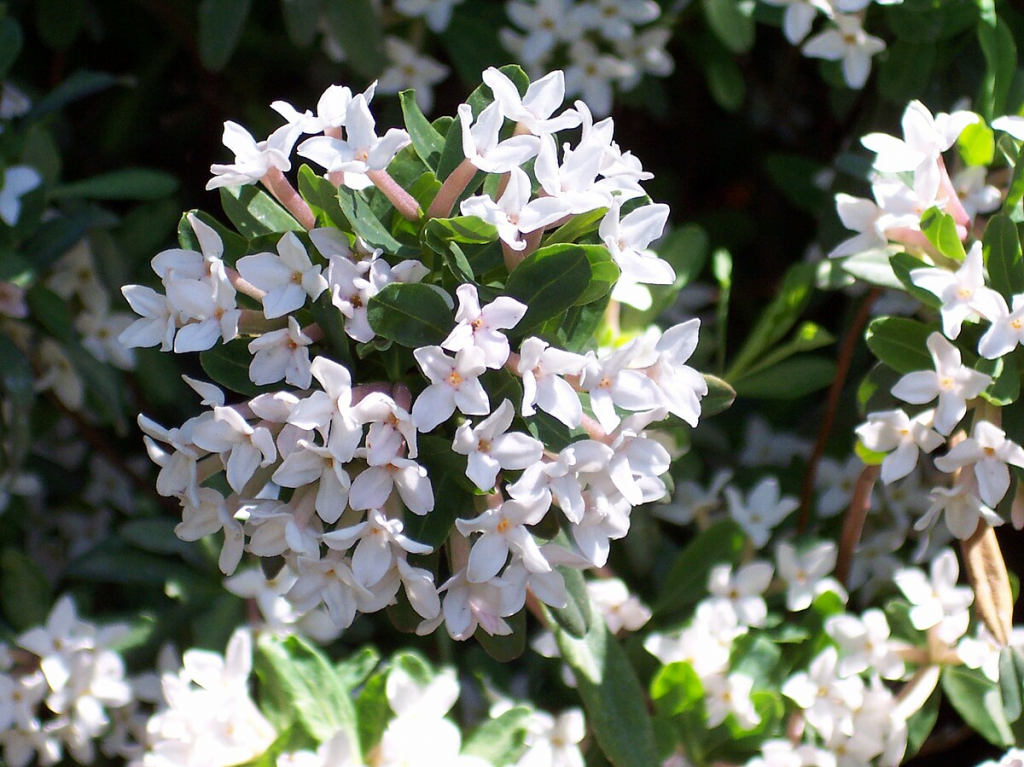
This semi evergreen to deciduous shrub is the result of a cross between D. caucasica and D. cneorum and is a member of the Thymelaeaceae, a plant family of just under 900 species, most of which are unfamiliar to North American gardeners. The plant grows 3-4′ tall and wide, and has a dense, rounded habit. The leaves are 1-2″ long, lanceolate to oblanceolate, and dull blue-green. In late spring, 1-2″ wide umbels of pink-tinged buds open to pale pink to white flowers with a possible rebloom in late summer or early fall. The flowers are tubular, .5″ across, and very fragrant. The red berries that follow are attractive but poisonous to mammals. Several desirable cultivars are available but plants are difficult to transplant so should be left in place once planted. D. x burkwoodii is a good choice for use as specimen, in borders and foundation plantings as well as in woodland and fragrance gardens. The genus name, Daphne, honor a nymph of Greek mythology associated with fountains, wells, springs, streams, brooks and other bodies of freshwater. The hybrid name, burkwoodii, honors the plant breeder Albert Burkwood (1888-1951).
Type: Flowering semi-evergreen to deciduous shrub
Outstanding Feature: Fragrant flowers
Form: Rounded
Growth Rate: Slow
Bloom: Umbels of pale pink to white tubular flowers in late spring with possible rebloom in late summer or early fall
Size: 3-4′ H x 3-4′ W
Light: Full sun to partial shade; afternoon shade in hot climates
Soil: Average, consistently moist, well-drained
Hardiness: Zones 4-8
Care: Prune immediately after flowering but only when necessary
Pests and Diseases: Susceptible to leaf spots, canker, twig blight, crown rot, viruses, aphids, mealybugs and scale. Death may be sudden and without a detectable cause.
Propagation: Semi-hard tip cuttings in fall
Outstanding Selections:
‘Briggs Moonlight’ (yellow leaves with green edges; lacks vigor; grows best in zones 5-9)
‘Carol Mackie (cream variegated leaves)
‘Silveredge’ ( white variegated leaves with pink flowers)
‘Somerset’ (up to 5′ tall, large purple-pink flowers)
Comment: All parts of the plant are poisonous.
Photo Credit A. Barra Wikimedia Commons